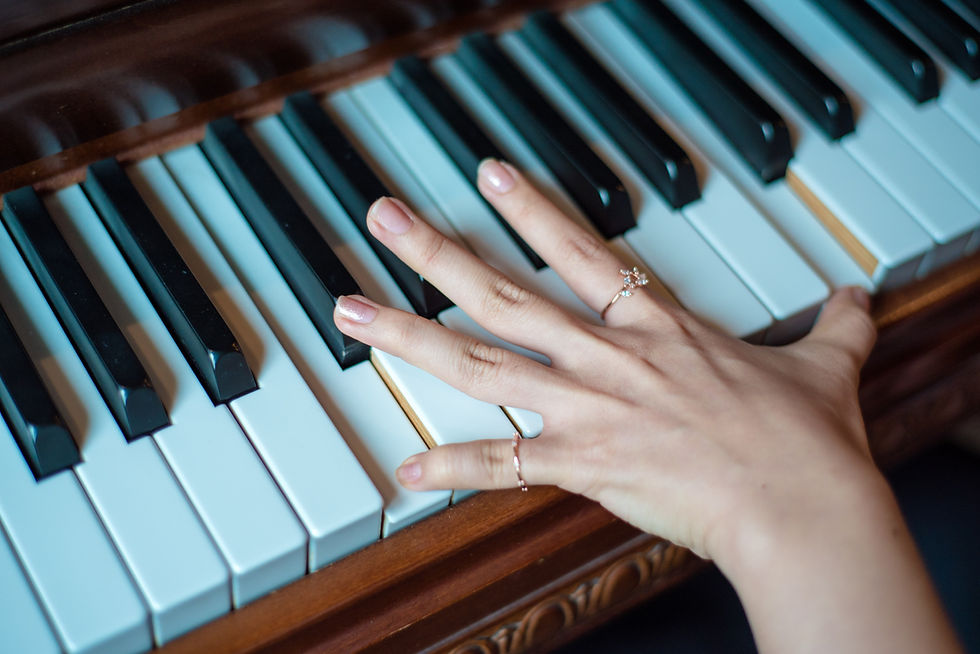Relax and Play
- Amy Taylor
- Dec 13, 2021
- 3 min read
Updated: Dec 27, 2021
Tips for how to relax at the piano
Piano playing can be stressful. A pianist's brain juggles so many things: note recognition, key placement, dynamics, articulation, rhythm, timing, expression, musicality, and the list goes on. Nobody likes making mistakes, and it seems that with every mistake you make, more and more tension builds up in your body, making it hard to relax and enjoy yourself - which wasn’t that the whole reason you started playing piano in the first place?
How can we relax at the piano?
It starts with relaxing the body, and I recommend that my students do a series of stretches before and after playing to bring relaxation into their bodies.
The neck
Gently lean your left ear over towards your left shoulder. This should create a slight stretch in the right side of your neck. Breath in deeply and allow the exhale to relax that stretch. Do this three times and then switch sides, dropping your right ear towards your right shoulder, breathing in deeply, and allowing the stretch to relax your neck. If you want to make this stretch a little more intense, gently rest your hand on top of your head (do not pull down, this is supposed to be a gentle stretch).
Release your head and very slowly do some neck circles. This will relax the whole neck and will show you any additional areas that need attention in your neck.
The shoulders
The shoulders are arguably the number one place we carry tension while playing. For some reason, we like to hike those shoulders up really high and tighten them. This exercise will help you deal with tense shoulders.
Make a fist with your hands and on an inhale quickly draw your shoulders up to your ears inviting as much tension as you can. Then on an exhale drop the shoulders, unclench your hands and release everything. Do this at least three times in a row and you should start to feel better. I like to do this exercise throughout my practice if I start feeling tension in my shoulders.
The back
Sitting tall take your right hand and place it on your left knee. Take your left hand and put it behind your back as far as it will go, almost as if you were reaching for your right hip. On an inhale, lift your heart forward and sit taller. On an exhale relax and switch sides. Put your left hand on your right knee and place your right hand behind your back as far as it will go. Inhale to lengthen the twist, exhale to release. Do this exercise three times and you will begin to feel you back relax.
My variation on a cat/cow pose in yoga is very effective for stretching and releasing tension in the lower back. From a seated position, place your hands on your knees and pull your torso towards the front of your body, arching the back. Then exhale and curl your back away from your hands creating a stretch in the low back. Breathe and stretch like this at least three times.
Listen to your body
If any of these stretches cause discomfort, stop them immediately. As you stretch, pay attention to what your body needs. Does it need more repetitions? Less? Three repetitions is a great place to start but you may find on some poses that you need more in order to get the tension out.
When to use these stretches
Always begin and end your practice session with this series of stretches. If you are going to be seated at the piano for 45 minutes or longer, you may want to break up your practice routine with these stretches.
The most important thing is to pay attention to your own body and discover what it needs.




Comments